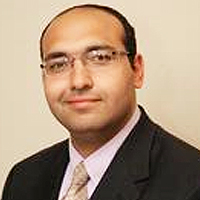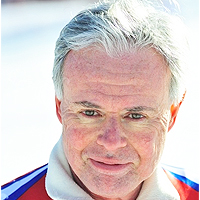Abstract
Research Article
Time Electron Theory
Syed Munim Qadri*
Published: 05 April, 2024 | Volume 7 - Issue 1 | Pages: 026-039
What is time? Is it a physical quantity, illusion, or dimension? Defining time is challenging and fascinating. We often consider time as a dimension to help us understand the concept of space-time. Time undeniably exists, but we can only sense its presence through its effects. For instance, if we take two apples, one bought months ago and the other just a day ago, we can tell that one apple was bought a long time ago because it had rotted. We express time as the effect caused by it. If there were no effects of time on this universe, then the concept of time would not exist [1,2].
Read Full Article HTML DOI: 10.29328/journal.ijpra.1001081 Cite this Article Read Full Article PDF
Keywords:
Electron interaction theory of time; Time as an emergent property; Electron movement and time perception; Entropy and time's arrow; Gravitational time dilation; Microscopic vs. Macroscopic time perception; Time equation; Breaking of symmetry and time; Quantum transitions and time's flow; Quantum mechanics; Special relativity
References
- Ilya P. Being Time and Becoming. World Scientific Publishing Company. 2003.
- Dragan M. Emergent time. Stanford Encyclopedia of Philosophy. 2018. [https://plato.stanford.edu/entries/properties-emergent/](https://plato.stanford.edu/entries/properties-emergent/))
- David K. Time Travel: A Philosophical Guide. Routledge. 2013.
- Anders P, David BE. Quantum Theorien: A Textbook in the History of Ideas with a Philosophical Introduction. 2001. Springer.
- Valentin GM. Quantum simulations of light propagation in dispersive media. Physical Review A. 2014; 89 (2): 023814. ([https://arxiv.org/abs/1307.7222](https://arxiv.org/abs/1307.7222))
- Roger P. The Road to Reality. Alfred A. Knopf. 2004.
- Patrick H. Traveling at the speed of thought: The influence of embodied time perception on mental rotation. Cognition. 2002; 82 (2): 177-209. ([https://www.frontiersin.org/articles/10.3389/fnbot.2014.00014](https://www.frontiersin.org/articles/10.3389/fnbot.2014.00014))
- Wojciech ZH. Decoherence, einselection, and the quantum origins of the classical. Reviews of Modern Physics. 2003; 75 (3): 797. ([https://journals.aps.org/prl/abstract/10.1103/PhysRevLett.82.2860](https://journals.aps.org/prl/abstract/10.1103/PhysRevLett.82.2860))
- Carlo R. The Order of Time. Riverhead Books. 2018.
- Giovanni AC. Doubly Special Relativity. 2013.
- Philip AW. More is different. Science. 1972; 177(4047): 393-396.
- Thomas CM, Joy TA. Elements of Information Theory. Wiley-Interscience. 2006.
- Vlatko V. Decoding Reality: The Universe as Quantum Information. Oxford University Press. 2010.
- Yakir A. Can Entanglement Generate Realism? Physical Review A. 2008; 78 (1): 012106. [https://arxiv.org/abs/0706.2842](https://arxiv.org/abs/0706.2842))
- McTaggart JMTE. A Commentary on Hegel's Logic. Cambridge University Press. 1908.
- Murray GM. The Quark and the Jaguar. W. W. Norton & Company. 1995.
- Per B. How Nature Works: The Science of Self-Organized Criticality. Copernicus. 1996.
- Boccaletti S. Complex networks: Are there any nodes with essentially localized vibrations? Chaos. 2000; 10(4): 929-943.
- Huw P. Time's Arrow and Archimedes' Point. Oxford University Press. 1997.
- John P. Fault-Tolerant Error Correction. 1997. ([https://arxiv.org/abs/quant-ph/9712048] (https://arxiv.org/abs/quant-ph/9712048))
- Carl H. Causality in Spacetime. Oxford University Press. 2013.
Figures:
Similar Articles
-
Spin supercurrent in ecologyLiudmila Borisovna Boldyreva*. Spin supercurrent in ecology. . 2023 doi: 10.29328/journal.ijpra.1001052; 6: 057-067
-
Cyclical Cosmology, Energy and Curvature of Space-TimeSanjay Bhushan*. Cyclical Cosmology, Energy and Curvature of Space-Time. . 2024 doi: 10.29328/journal.ijpra.1001102; 7: 159-161
Recently Viewed
-
Evaluation of the efficacy of transcorneal electric stimulation therapy in retinitis pigmentosa patients with electrophysiological and structural testsMualla Sahin Hamurcu*,Sema Akkan Aydogmuş,M. Sinan SARICAOĞLU. Evaluation of the efficacy of transcorneal electric stimulation therapy in retinitis pigmentosa patients with electrophysiological and structural tests. Int J Clin Exp Ophthalmol. 2020: doi: 10.29328/journal.ijceo.1001030; 4: 031-037
-
The Lived Experiences of Addiction Counselors and Applications for Building ResiliencyBrian N Paulson*, Amy L Hayes, Stacey C Lilley, Brad A Imhoff, Charlotte A Crosland*. The Lived Experiences of Addiction Counselors and Applications for Building Resiliency. J Addict Ther Res. 2024: doi: 10.29328/journal.jatr.1001031; 8: 024-034
-
Impact of Latex Sensitization on Asthma and Rhinitis Progression: A Study at Abidjan-Cocody University Hospital - Côte d’Ivoire (Progression of Asthma and Rhinitis related to Latex Sensitization)Dasse Sery Romuald*, KL Siransy, N Koffi, RO Yeboah, EK Nguessan, HA Adou, VP Goran-Kouacou, AU Assi, JY Seri, S Moussa, D Oura, CL Memel, H Koya, E Atoukoula. Impact of Latex Sensitization on Asthma and Rhinitis Progression: A Study at Abidjan-Cocody University Hospital - Côte d’Ivoire (Progression of Asthma and Rhinitis related to Latex Sensitization). Arch Asthma Allergy Immunol. 2024: doi: 10.29328/journal.aaai.1001035; 8: 007-012
-
Delayed Diagnosis of Early-onset Sarcoidosis: A Case Report and Literature ReviewMutibah Ali Al-essi*, Lujain Salah Binkhamis, Samah Mohammed Aljohani, Nora Mohammad Alzahrani. Delayed Diagnosis of Early-onset Sarcoidosis: A Case Report and Literature Review. J Adv Pediatr Child Health. 2024: doi: 10.29328/journal.japch.1001061; 7: 001-005
-
An Individual Rehabilitation and/or Habilitation Program for Children with Disabilities (IPRH)Shapovalov KA*, Shapovalova LA, Knyazeva NG, Yu PG, Toropova VS, Sannikova LА, Mezentseva AS. An Individual Rehabilitation and/or Habilitation Program for Children with Disabilities (IPRH). J Adv Pediatr Child Health. 2024: doi: 10.29328/journal.japch.1001062; 7: 007-012
Most Viewed
-
Evaluation of Biostimulants Based on Recovered Protein Hydrolysates from Animal By-products as Plant Growth EnhancersH Pérez-Aguilar*, M Lacruz-Asaro, F Arán-Ais. Evaluation of Biostimulants Based on Recovered Protein Hydrolysates from Animal By-products as Plant Growth Enhancers. J Plant Sci Phytopathol. 2023 doi: 10.29328/journal.jpsp.1001104; 7: 042-047
-
Sinonasal Myxoma Extending into the Orbit in a 4-Year Old: A Case PresentationJulian A Purrinos*, Ramzi Younis. Sinonasal Myxoma Extending into the Orbit in a 4-Year Old: A Case Presentation. Arch Case Rep. 2024 doi: 10.29328/journal.acr.1001099; 8: 075-077
-
Feasibility study of magnetic sensing for detecting single-neuron action potentialsDenis Tonini,Kai Wu,Renata Saha,Jian-Ping Wang*. Feasibility study of magnetic sensing for detecting single-neuron action potentials. Ann Biomed Sci Eng. 2022 doi: 10.29328/journal.abse.1001018; 6: 019-029
-
Pediatric Dysgerminoma: Unveiling a Rare Ovarian TumorFaten Limaiem*, Khalil Saffar, Ahmed Halouani. Pediatric Dysgerminoma: Unveiling a Rare Ovarian Tumor. Arch Case Rep. 2024 doi: 10.29328/journal.acr.1001087; 8: 010-013
-
Physical activity can change the physiological and psychological circumstances during COVID-19 pandemic: A narrative reviewKhashayar Maroufi*. Physical activity can change the physiological and psychological circumstances during COVID-19 pandemic: A narrative review. J Sports Med Ther. 2021 doi: 10.29328/journal.jsmt.1001051; 6: 001-007

HSPI: We're glad you're here. Please click "create a new Query" if you are a new visitor to our website and need further information from us.
If you are already a member of our network and need to keep track of any developments regarding a question you have already submitted, click "take me to my Query."

















































































































































